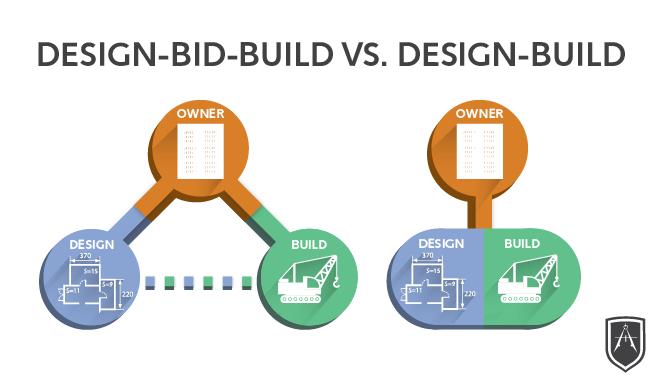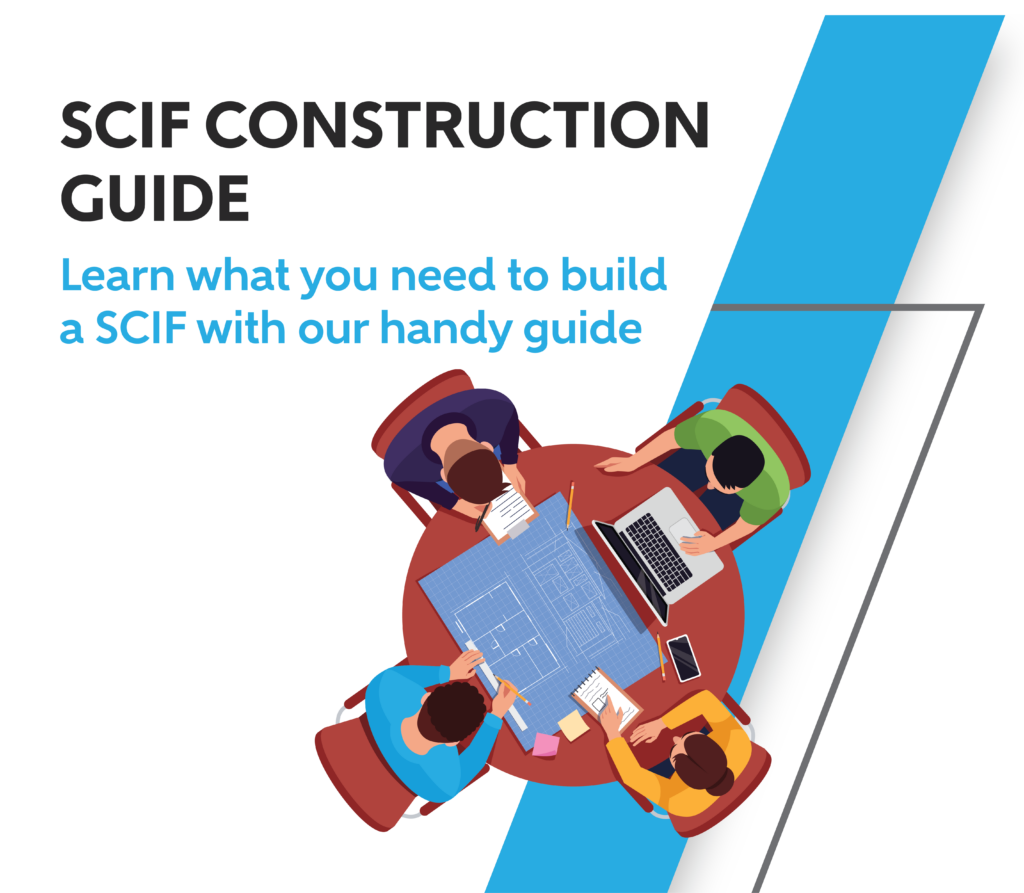Four reasons to select the design-build project delivery method for your SCIF or SAPF
If you’re looking to build a Sensitive Compartmented Information Facility (SCIF) or Special Access Program Facility (SAPF), you have two main options when it comes to the project delivery method: the traditional route of design/bid/build or the design/build method. The most important thing to consider when choosing one of these methods is the ability to attain accreditation by the government, which allows you to use your SCIF to store and process classified information.
In addition to the modality through which you’ll be getting your facility constructed, there are other factors that play a role in deciding which method to go with, including cost, speed, and overall quality of the project. The design/build method has an array of benefits relating to all of these factors and is the most reliable, cost-efficient way to get your classified program operating in the space.
Design/Build vs. Design/Bid/Build
Design/build is the project delivery method in which the designer and builder are “under the same roof,” working for the same company. This means that you would contract the design/builder team for the whole project, beginning with creating the project concept, designing the space, and developing the plans and construction documents, all the way through completing construction and accreditation. Think of it as a whole package deal or “turn-key”.
This differs from the more traditional process of hiring out a designer (or architect) to design the plans for the space, then using those documents to acquire bids from outside contractors to do the construction. This bifurcated process adds an element of detachment between the designer and the builder.
When it comes to SCIF construction, the design/build method offers key benefits that can have a significant impact on your project. Below are the reasons why design/build is the ideal way to go when it comes to building your secure facility.
Reasons to Choose Design/Build
It is the best way to ensure accreditation of your SCIF.
When you choose a design/build team for your SCIF construction project, you get the benefit of a team that, from start to finish, can ensure the necessary high-security features needed for accreditation are incorporated correctly. This is especially true when you choose a team who is experienced in building secure facilities. There are extensive specialized standards for SCIF construction, and with one team taking the project from start to finish, these elements are much less likely to be overlooked or incorrectly implemented.
Each phase of the SCIF construction project must be managed toward achieving accreditation. To name just a few important steps in the process, the designer must work in sync with the site security manager (SSM) and the accrediting official (AO) to determine the high-security features to be incorporated in the facility’s design. The designer will then need to provide the necessary elements for the pre-construction design package (which will need approval by your AO) as well as develop the actual design documents. During the construction phase, the builder will need to install all of the determined high-security elements, properly following the Construction Security Plan (one of many design documents required in the process). There are a lot of moving pieces that need to be managed to achieve accreditation, and most general contractors don’t specialize in SCIFs and are not familiar with these requirements. Even if your designer is familiar with building secure facilities, contractors with the necessary experience can be hard to find. If the designer and builder are not on the same team and have limited experience with SCIF construction, important security features that are essential to your project being accredited can, unfortunately, be missed.
With a cohesive design/build team assigned to your project, the attention of the designer and the builder are seamlessly and consistently focused on meeting the appropriate SCIF construction standards and ensuring the accreditation requirements for the project are followed.
It can save you time.
With design/build, taking a project from its initial needs to the final product is typically quicker than with the design/bid/build method. Once a SCIF project is funded, you will want to get it done as quickly as possible, within reason. Setting realistic timelines is important, but delays or rework are time-consuming and can be very expensive. The design/build method can help minimize these time risks by reducing the back and forth between builder and designer and expediting solutions to any issues that could potentially block up the construction process. With a design/builder experienced in SCIF building, issues can even be foreseen and avoided altogether due to the experience they bring. For these reasons, the designer and builder being under one roof can drastically shorten a project timeline. For example, the traditional (design/bid/build) method used on a million-dollar project might take 9 months. With design/build, a project of that magnitude could be reduced to only 5 months’ time, and in some cases even less.
It can help you control your costs.
Because the design/build delivery method typically shortens the project timeline, it can help you control your costs. Without delays caused by the back and forth between designer and builder, you can more closely adhere to your timeline and, therefore, your budget.
Another cost advantage of using a design/builder experienced in SCIF construction is the knowledge both the designer and builder would have of the security industry. When a designer isn’t typically involved in the construction process, their exposure to construction technologies can be limited. In choosing a design/builder who is familiar with the most up-to-date and readily available systems, you don’t run the risk of outdated or unnecessarily costly elements being implemented into the design. They would be familiar with the best fits for your project from the high-security elements to the more typical construction pieces, like electrical or HVAC systems.
It can improve the overall quality of the project
Using a design/builder can improve the overall quality of your project. With the traditional approach, the designer may be familiar with secure facilities; however, as mentioned earlier, contractors with SCIF experience aren’t always easy to find. A design/build team with SCIF experience gives you the advantage of having two parties who are used to working together on secure facilities. Not only can this unified process make for a smoother build, but the design/builder’s knowledge of the most current construction and security technologies makes for a superior delivery method than that of the traditional method. If you were to need something specific for your secure facility, such as a panelized soundproof wall that can fold out and back, an experienced SCIF design/builder would have the advantage of knowing where to source such a product and what cutting edge options are available.
What about design/build when it comes to modular or prefab secure facilities?
If modular or prefabricated SCIF construction is a better fit for your secure facility than ground-up construction, design/build can still be an effective project delivery method. It’s important that a designer is familiar with how modular/prefabricated construction works and any limitations when it comes to using these types of “roll-on” solutions for SCIFs. Limitations can include weight or height specifications, transportation regulations, or cost when it comes to delivering to remote locations. A designer who is familiar with these limitations can ensure that they are not exceeded in the design, which can help avoid any project delays down the line.
As you start down the road of building your secure facility, you will want to choose a design/builder whom you can trust and who has a solid reputation within the security industry. With more than 600 SCIFs constructed using design/build throughout the United States, Adamo offers this trust to its clients and is committed to adding value to each project from start to finish. Contact us to find out more about our design/build services.




